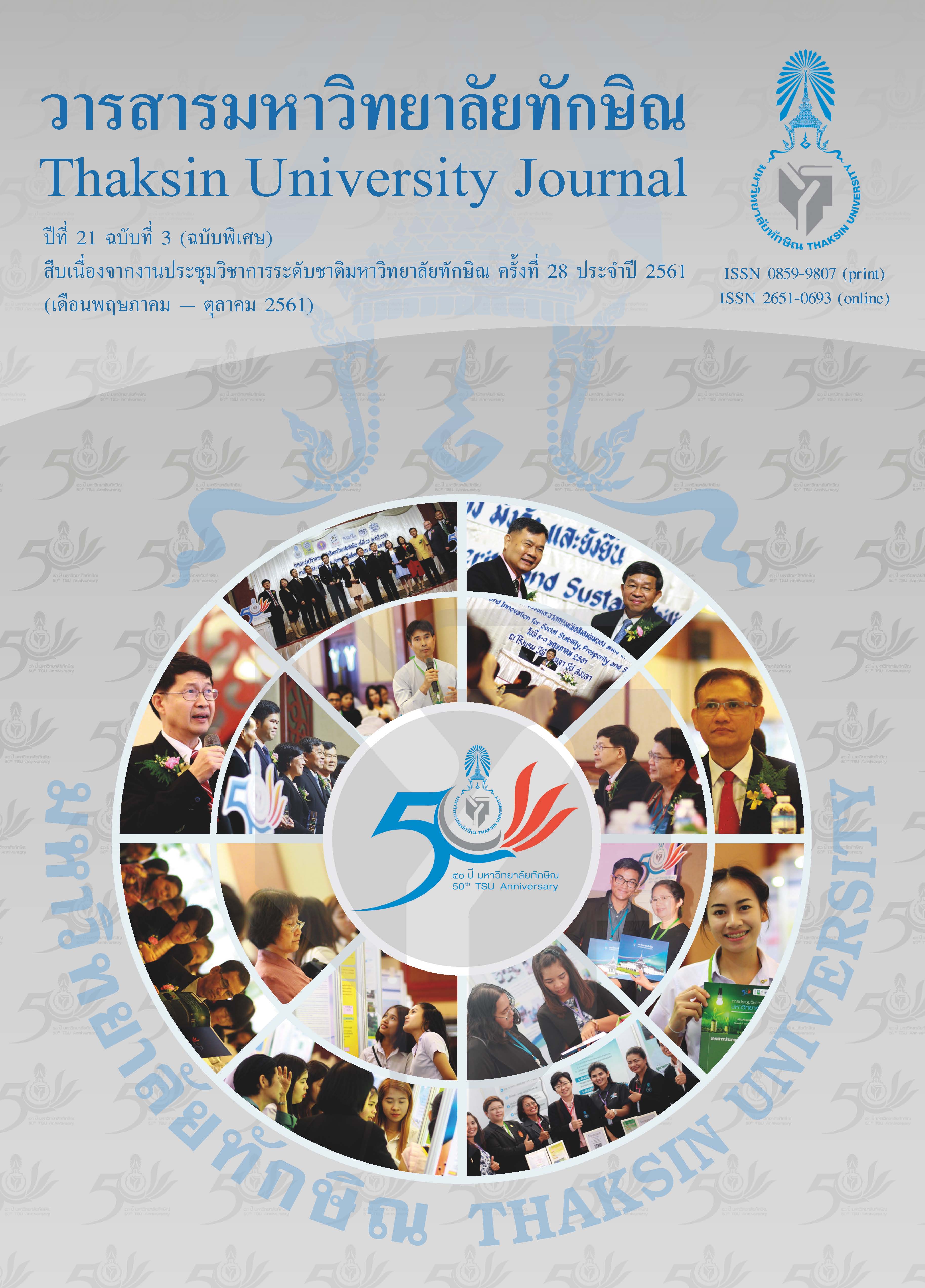Anti-Acne Causing Bacteria Activity of Acne Gel Composed with Biocompounds Produced from Brevibacillus laterosporus
Main Article Content
Abstract
Anti–acne gel composed with partially purified biocompounds (PPBs) prepared from culture broth of Brevibacillus laterosporus at a protein concentration of 0.087 mg/ml could in-vitro dominantly inhibit bacteria causing acne in a group of Staphylococci (Staphylococcus aureus, S. epidermidis) but did not inhibit Propionibacterium acnes. Moreover, it revealed anti–acne gel composed with PPBs could inhibit the growth of Staphylococci similar to commercial anti–acne product composed with Clindamycin. Interestingly, anti-acne gel with of PPBs did not cause contact dermatitis. It is possible to study the appropriate concentration to mix in acne gel. In addition, it may add the active ingredients to increase anti-bacterial activity against bacteria causing acne for acne treatment on healthy skin.
Article Details

This work is licensed under a Creative Commons Attribution-NonCommercial-NoDerivatives 4.0 International License.
References
2009, from http://www.patentstorm.us/applications/20090143295.html.
[2] Ubonsak, V. (2009). Development of Cosmetic Gels for Acne from the Extract of Excoecaria cochinchinensis
Lour (Online). Retrived 18 January 2013, from, http://eoffice.pharmacy.cmu.ac.th/mis/student/student_
detail.asp? id=4630016.
[3] Swanson, I.K. (2003). “Antibiotic Resistance of Propionibacterium acnes in Acnes Vulgaris”, Dermatology Nursing.
5. 359–361.
[4] Sukatta, U., Rugthaworn, P., Pitpiangchan, P. and Dilokkunanant, U. (2008). “Development of Anti-Acne Gel
from Mangosteen Crude Extract”, Kasetsart Journal (Natural Science). 42, 163-168.
[5] Athikomkulchai, S., Watthanachaiyingcharoen, R., Tunvichien, S., Vayumhasuwan, P., Karnsomkiet, P., Sae-Jong, P.
and Ruangrungsi, N. (2008). “The Development of Aanti-Acne Products from Eucalyptus Globulus and
Psidium Guajava Oil”, Journal of Health Research. 22(3), 109-113.
[6] Lertcanawanichakul, M., Choopan, A., Nakbud, K. and Dawveerakul, K. (2009). Study on Brevibacillus
laterosporus. Strain SA14 for Associated Anti-Methicillin Resistant Staphylococcus aureus (Online).
Retrieved 18 January 2016, from: http://www.scisoc. or.th/stt/34/paper/STT34_ B2_B0001.pdf.
[7] Volesky, B., Luong J.H.T. and Aunstrup, K. (1984). “Microbial Enzymes: Production, Purification, and Isolation”,
Critical Reviews in Biotechnology. 2(2), 119-146.
[8] Bradford, M.M. (1976). “A Rapid and Sensitive Method for the Quantitation of Microgram Quantities of Protein
Utilizing the Principle of Protein-Dye Binding”, Analytical Biochemistry. 72, 248-254.
[9] Prasantn. M. (2011). “Antimicrobial Efficacy of Different Toothpastes and Mouth Rinses: An In Vitro Study”,
Dental Research Journal. 8(2), 85-94.
[10] Siriraj Piyamaharajkarun Hospital. (2009). Allergic Contact Dermatitis Tested by Patch Test (Online). Retrieved
22 January 2015, from: http://www.biopluschem.com/index.php= show&ac= article&Id=17805.
[11] Triyasut, V., Itharat, A., Chakkavittumrong, P. and Kanokkangsadai, P. (2016). “Irritant Reaction on Skin of Long
Pepper Extract in Healthy Volunteers (Clinical Trial Phase I)”, Thammasat Medical Journal. 16(4),
608-615.
[12] US Patent 5981473. (1999). Composition and Method for Treating Acne (Online). Retrieved 1 December 2009,
from http://www.patentstorm.us/patents/5981473/fulltext.html.


